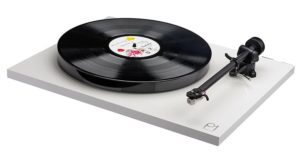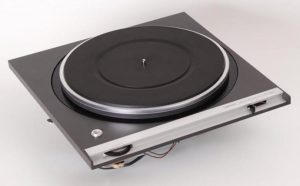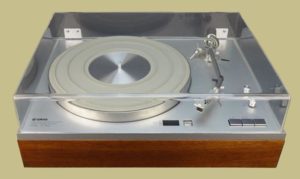If you are interested in playing LPs, either for the first time or as a return to vinyl, it’s can be difficult to know where to start, especially if you’re interested in vintage gear. Following on from the first part in this series, we asked our turntable expert which models he would recommend.
Which models would you recommend as easy to use, set up and service?
If buying new, I’d say a Rega Planar 1 would be a great place to start. It’s no fuss or bother, has a great Audio Technica-based cartridge, and third party elliptical styli are available for them if you know where to look, so no need for upgrade nonsense. The Planar 1 has superb, reliable sonics if sited carefully. Rega LISTEN to music on their products and, to me, that’s important!
ProJect do a ridiculously large range of assorted decks in all shapes, sizes and budgets, but seem very popular if the models from Rega aren’t around.
Older gear is tricky as ALL of it needs at least some work, so it’s not for the uninitiated. Older Regas are good generally with RB-series tone arms (the straight black ones, not the S-shaped one which may need work) and Rega parts are not expensive if needed. Beware of old classic Garrard and Dual autochanger decks as they all suffer from hardened grease, which is a nightmare to remove and carefully replace – everyone ladles it on with a trowel…
What should you look out for when buying second-hand?
Condition, obviously. Has the deck been modified or got at by an over-enthusiastic amateur? Why is it being sold? Can it be demonstrated and collected rather than risk it being badly packed and then having it kicked around in transit? Can the purchaser afford to let a professional service it or are they happy to read up, learn some basic maintenance and do it themselves? Prices are daft, but too cheap is often as bad as too expensive.
Any forgotten models you’d recommend?
I’m sure more will come to mind as soon as this is published, but here are a few:
The Yamaha YP800 was a nice-looking deck.
Micro Seiki DDX/DQX 1000 – always needs proper siting but I bet they’d sound good today.
In a comparative review conducted 50-odd years ago, the Sony TTS3000 belt drive beat the Garrard 401, Thorens TD124 and Goldring Lenco G99, together with its TTS8000 offspring which rarely came over to the UK.
I’ve never used or owned one, but Elac made some interesting decks, as did Perpetuum Ebner (which Dual bought – they were kind of related in the dim and distant past due to shared family, I believe).
Should auto-changers be avoided?
Audiophiles would never contemplate an autochanger but some are often worth considering. 7″ singles were designed for stacking, so there’s no harm at all in playing them one after the other in a stack. (The label area has a raised profile and often with a ratchet type arrangement so two singles together kind of ‘grip’ each other and the grooves don’t touch at all unless the single is very worn. Many LPs lack any real form of separating the grooves these days and even if they have lipped edges and slightly raised label areas, I really wouldn’t stack.) I wouldn’t use LPs in a stack but many in the US still do! The better the stylus, the more critical it is on tone arm alignment and Vertical Tracking Angle becomes very important for best sound and minimal wear.
Many borderline ‘HiFi’ changer decks had single and multi spindles and the Garrard ‘Autoslim’ series were often used this way (any Garrard with the same basic control layout as the SP25 models and having a kind of rotating ‘flipper’ to sense record size is an Autoslim chassis model). Later BSRs similar to the MP60/P128 also had replaceable spindles.
Larger format Garrard decks from the late 60s onwards cannot stack 7″ singles with smaller centre holes (any adaptors made for the deck are long gone now) and I’m not keen on the way LPs are pushed off a side support to clump down on the platter below.
If you’re seriously posh, then the better Duals from the mid-60s onwards can make excellent changers and offer easily replaceable cartridge carriers for ‘every day and best’. LPs drop on a cushion of air, so if you must stack LPs, these are the safest. Garrard did something similar in the Lab 80 changer, but it was only this model, sadly, as the auto spindle was fragile and easily damaged. My Dual 1019 is a fantastic deck in anyone’s terms and ‘VTA’ is easily sorted with an extra 3 mm mat on top of the existing one.
In general, all autochangers all need a lot of degreasing work by now and are not for the faint-hearted.
Part 3 will look at maintenance and which turntables to avoid.




